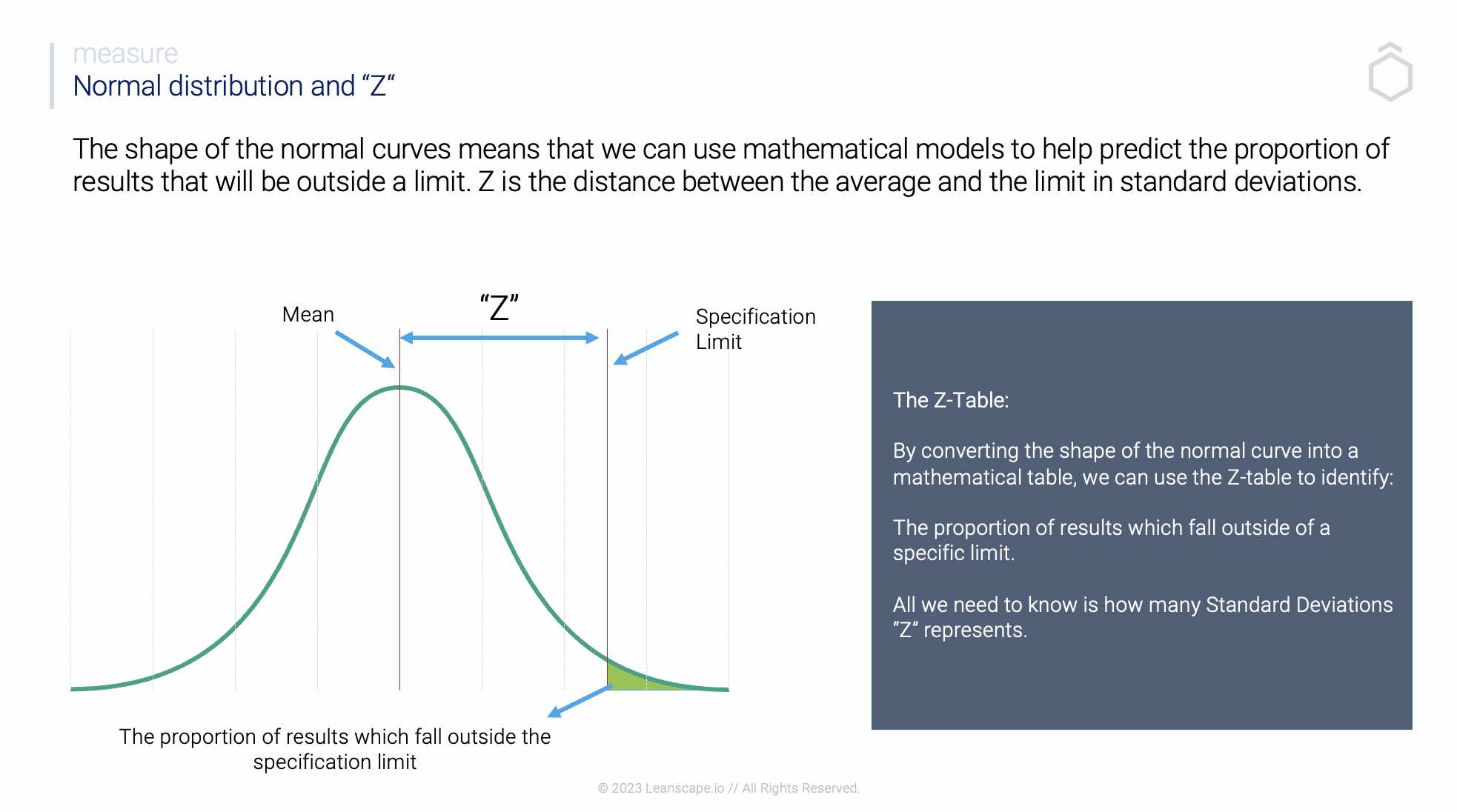Sigma levels are a way of measuring the quality of a process or product. They are used to determine how many defects are present in a given number of items or actions, with higher sigma levels indicating a lower rate of defects.
As a business professional, you’re likely familiar with process capability and continuous improvement. With various metrics and methodologies available, it can be challenging to determine which one best suits your needs. Enter Six Sigma, a popular methodology that aims to streamline and improve business processes. The key to this methodology is a single, common metric called the Sigma Level. In this article, we’ll explore how the Sigma Level is calculated, its relationship to process capability, and the impact of the Sigma Shift on processes over time.
What is a Sigma Level?
A Sigma Level (also known as Six Sigma) is a quality management process that strives to improve the production of products and services by measuring and reducing defects. Motorola first developed it in 1986, and has been widely adopted across numerous industries. The main goal of Six Sigma is to identify processes, products, and services that are not meeting customer requirements and work to improve them.
A metric called “Sigma Level” is used to measure the effectiveness of Six Sigma processes. This measures the number of standard deviations from the mean performance of a procedure or product. The higher the Sigma Level, the better the performance.
Calculating the Sigma Level
The Sigma Level measures a process’s performance or capability, denoted as a number between 1 and 6. This number represents the standard deviations within the customer requirements or specifications range. By using the Sigma Level, businesses can easily compare their processes’ capabilities and identify opportunities for improvement.
Now I am sure you have all heard that six sigma is the highest quality level everyone should try to achieve. However, it would be best to consider the sector, the context, the risk and the cost of getting to six sigma process quality. If you are an airline or a large pharmaceutical company, you can not afford issues with four customers per million. You will need to be higher than six sigma. But if you work in a restaurant, does it matter if you make a mistake on the customer bill every 10 or 20 customers? What about 1000 out of a million? The cost of getting the six sigma metric may outweigh the benefit or the six sigma methodology!
To calculate the Sigma Level, the following steps can be taken:
1. Determine the process’s upper and lower specification limits, as your customers define.
2. Calculate the process mean and standard deviation.
3. Use the following formula to find the Sigma Level: [(Upper Limit – Process Mean) / Standard Deviation]
For example:
If you have a process with an upper limit of 110, a lower limit of 90, a process mean of 100, and a standard deviation of 3, the Sigma Level would be (110 – 100) / 3 = 3.33.
You can use this approach to understand how many defects per million opportunities you have, giving a statistical measure to your process and maintaining a focus to operate within the specification limit of your customer. The higher sigma level is generally better, but perhaps three sigma is good enough!

Six Sigma Level and Process Capability
The Sigma Level is a key indicator of a process’s capability to meet what your customer wants. Generally, the higher the Sigma Level, the better the process’s capability. Here is the commonly accepted process capability benchmarks in terms of Sigma Levels:
– 1 Sigma: 68.27% of the process output meets customer requirements.
– 3 Sigma: 99.73% of the process output meets customer requirements.
– 4 Sigma: 99.9937% of the process output meets customer requirements.
– 6 Sigma: 99.99966% of the process output meets customer requirements.
We can use Control Charts to measure the variation within our processes and they are a powerful tool for monitoring process changes over time.
Six Sigma Table: If you wish to check other results, you can use a Sigma conversion table to measure the process performance to be more accurate.
By attaining higher Sigma Levels, businesses can effectively minimise defects and streamline their processes for maximum efficiency and customer satisfaction.

Is Sigma Level 3 any good?
Sigma Level 3 (or 3 sigma percentage) is considered a good level of performance for most processes and products. This means that 99.73% of the process output meets customer expectations, which is impressive. For many businesses, having this level of quality assurance can significantly improve their operations and customer satisfaction.
However, there are some sectors where Sigma Level 3 is not enough and striving for a higher Sigma Level is necessary. For example, in the medical sector, a process must attain at least Six Sigma level to be considered acceptable.
The takeaway is that you should always consider your sector and customer requirements when assessing the quality of your processes. The right balance between cost-efficiency and desired performance must be struck so businesses can deliver their services with optimal quality assurance.
The Impact of the Sigma Shift on Process Performance
The concept of the Sigma Shift acknowledges that processes are not static and tend to deteriorate over time due to various factors such as machinery wear, human error, or changes in the environment. We have normally distributed data, but over time the mean changes or the variation changes.
Because of this, businesses must adjust their Sigma Levels, typically by 1.5, to account for potential shifts in their processes. Maintaining a high Sigma Level despite this shift ensures that your process capability remains stable, reliable, and effective in meeting customer requirements.
Sigma Level Conclusion
In conclusion, understanding the Sigma Level can provide valuable insights into your business’s process capabilities and areas for continuous improvement. By monitoring and seeking to improve your Sigma Level, you’ll be well on your way to enhancing efficiency, minimising defects, and driving customer satisfaction. To take your business performance to the next level, consider engaging with our consultancy service experts specialising in Six Sigma methodologies and process management. Our team of professionals will guide you in identifying opportunities for growth and help you implement strategic improvement initiatives that drive real business results.


















